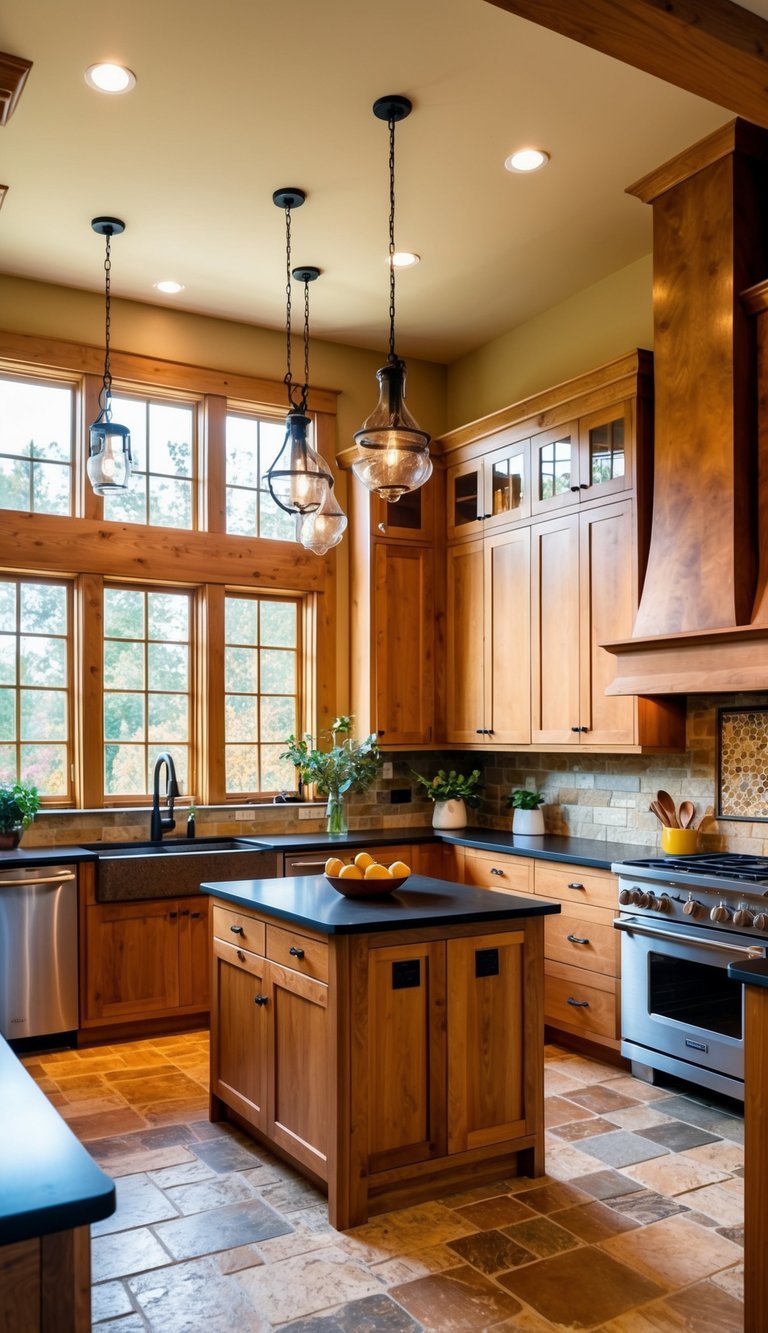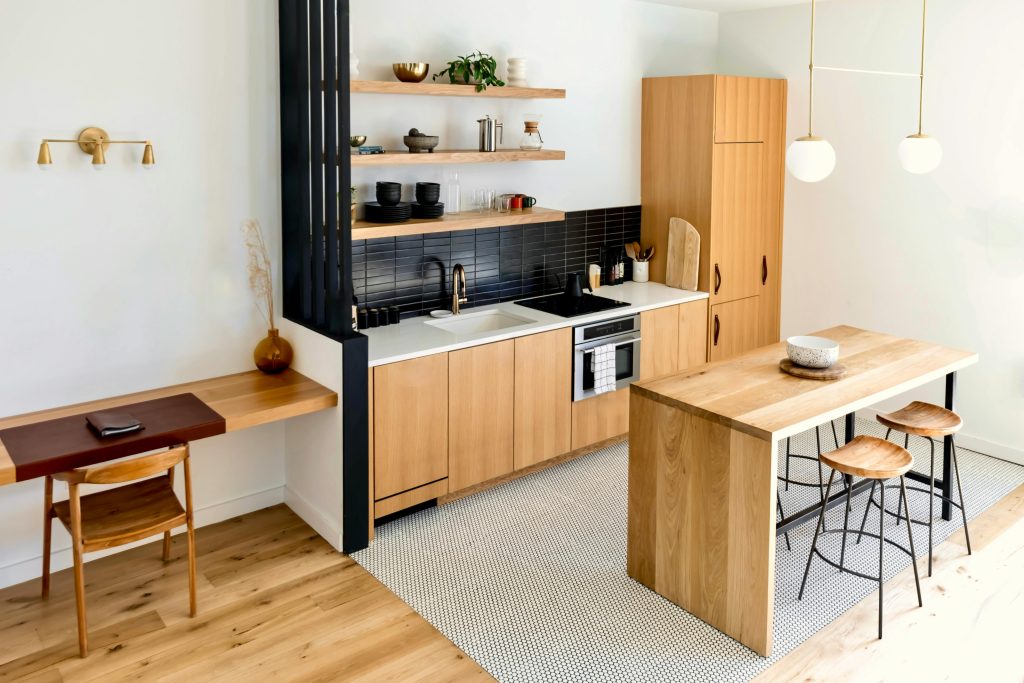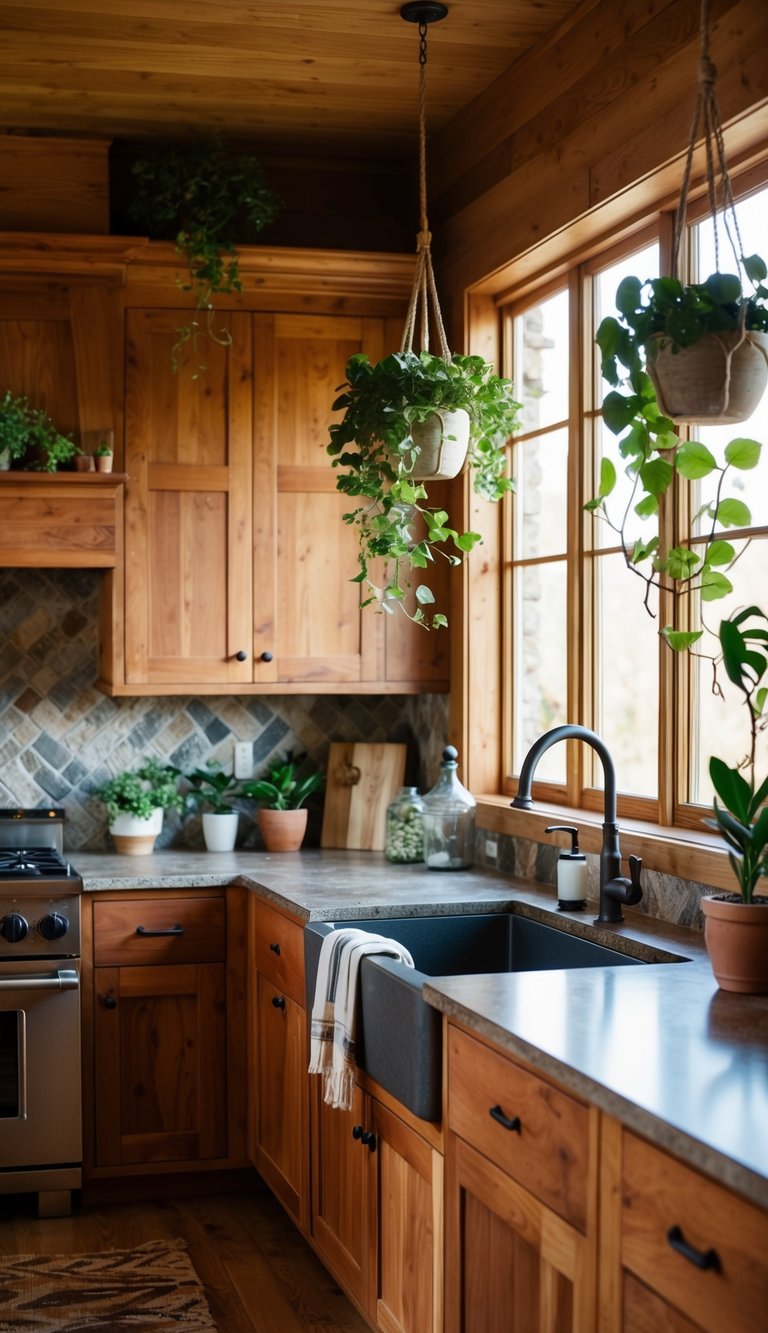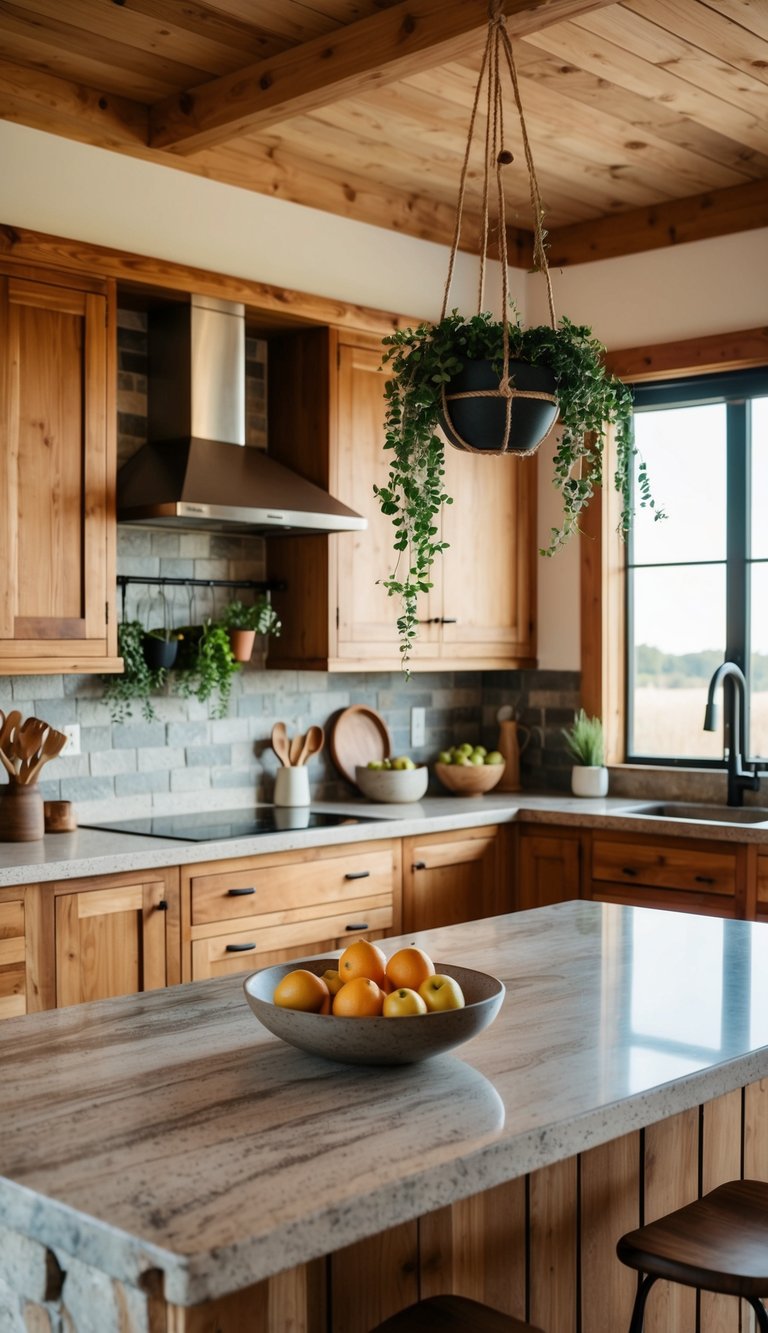Designing an earthy kitchen invites warmth and tranquility into your home, creating a space where you can feel relaxed and connected to nature. To achieve this, focus on incorporating warm, natural tones like terracotta, ochre, and soft greens, which can transform the overall ambiance of your kitchen. By blending these colors with organic materials such as wood and stone, you foster an inviting atmosphere that’s both functional and aesthetically pleasing.
You can enhance your kitchen’s earthy appeal further by selecting rustic accents and accessories that reflect natural elements. Think about incorporating open shelving made from reclaimed wood, earthy decorative items, and plants that can thrive in kitchen environments. These small touches can offer significant impact, making your kitchen feel more cohesive and grounded.
As you explore earthy kitchen designs, consider how lighting plays a crucial role. Soft, warm lighting can highlight the rich colors and textures you’ve chosen, creating a welcoming environment for both cooking and entertaining. By following these strategies, you can design a kitchen that not only looks beautiful but also feels like a serene retreat in your home.
How to design an earthy kitchen

Designing an earthy kitchen involves blending natural aesthetics with warmth and comfort. Start by selecting a color palette inspired by nature. Consider warm, earthy tones like terracotta, ochre, and burnt sienna.
Incorporate natural materials into your design. Use wood for cabinetry and countertops. Stone or ceramic tiles can enhance the rustic feel of the flooring.
Add plants to bring in a touch of nature. Herbs in pots or small indoor trees can create a vibrant atmosphere. Ensure that these elements are prominent, as they contribute significantly to the earthy vibe.
Pay attention to lighting. Choose fixtures that complement your design, like pendant lights made from natural materials. These will add warmth and enhance the overall ambiance.
When selecting decor, opt for items that reflect nature. Look for ceramics, woven baskets, and textiles in natural fibers. This integration of textures will elevate the cohesive look of your kitchen.
Lastly, ensure functionality aligns with style. A well-designed earthy kitchen should be comfortable and practical. Keep clutter to a minimum to maintain an inviting atmosphere.
By thoughtfully combining these elements, you can create a kitchen that feels like a refuge from the outside world, drawing from the beauty of nature.
Planning Your Earthy Kitchen Layout

Creating an effective layout for your earthy kitchen requires careful thought about space, functionality, and design principles. Focus on optimizing the available space while maintaining a cohesive aesthetic that reflects the warmth typically found in earthy designs.
Optimizing for Space and Function

Start by assessing your kitchen area. Take measurements to understand the available space and determine how to best utilize it. Prioritize essential zones such as cooking, prep, and storage.
Consider adding open shelves made from natural materials, which can enhance accessibility while providing a rustic look. Implementing pull-out cabinets or drawers can also optimize storage, allowing you to store items efficiently.
If you have limited counter space, think about using kitchen islands or carts. These not only provide additional prep surfaces but also can serve as gathering spots, enhancing the kitchen’s social nature.
Considering Work Triangle Principles
The work triangle consists of the stove, sink, and refrigerator. This concept is crucial for optimal kitchen design. Ensure these three elements are positioned to minimize unnecessary movements.
Aim for a distance between each element of 4 to 9 feet. This not only creates an efficient workflow but also keeps the cooking process functional. If space allows, a slight variation in layout can encourage more natural movement.
Incorporate clear pathways between each component to facilitate smooth transitions during meal preparation. Consider practical details like countertop materials that are easy to clean while enhancing the earthy aesthetic.
Small Kitchen Configurations

For small kitchens, every inch counts. Prioritize a layout that maximizes vertical space. Use wall-mounted racks for utensils or pots, freeing up counter space.
Additionally, think about incorporating multifunctional furniture. A breakfast bar can become a dining area, while a fold-down table offers a surface when needed and folds away when not in use.
Keep color choices light and airy, with soft tones that enhance the visual space. This creates an inviting atmosphere while avoiding the cluttered feel that can arise in smaller kitchens. Consider using reflective elements to add depth and openness.
Maintaining an Earthy Kitchen

To keep your earthy kitchen looking fresh, regular maintenance is essential. Here are some practical tips to help you maintain its charm.
1. Clean with Natural Products:
Opt for eco-friendly cleaning solutions. Vinegar and baking soda effectively clean surfaces without harming the environment.
2. Regular Dusting:
Dust accumulates quickly. Use a soft cloth to dust shelves, light fixtures, and appliances. This keeps your rustic decor vibrant.
3. Care for Wood Elements:
If you have wooden cabinets or countertops, treat them periodically with mineral oil. This prevents drying and maintains their natural beauty.
4. Manage Humidity:
Earthy kitchens often incorporate natural materials. Use a dehumidifier if your kitchen feels damp to prevent mold growth.
5. Rotate Decorations:
Change your decorative elements seasonally. Swap out textiles or tableware to refresh the look while maintaining a coherent earthy aesthetic.
6. Organize Storage:
Use baskets and containers for storage. This keeps items organized while enhancing visual appeal, as noted in this design guide.
7. Use Plants:
Incorporate indoor plants. They not only add to the earthy vibe but also improve air quality.
By following these tips, you can create a welcoming environment that reflects nature’s warmth while being easy to manage.

Frequently Asked Questions
When designing an earthy kitchen, you may have specific concerns and desires. Addressing common questions can help you make informed choices that enhance the natural aesthetic and functionality of your space.
What are the best color schemes for a modern earthy kitchen?
Neutral color palettes work best for an earthy kitchen. Shades of beige, taupe, and soft grays create warmth and sophistication. Incorporating deeper tones like olive green or terracotta can add depth and an organic feel.
How can I incorporate organic materials into my kitchen design?
Use materials such as wood, stone, and clay to bring a natural vibe. Consider reclaimed wood for cabinetry or countertops. Stone accents, like a slate backsplash, can also enhance that organic touch.
What type of cabinetry complements an earthy kitchen aesthetic?
Opt for cabinetry in warm wood tones or painted in earthy shades. Natural finishes without heavy gloss will help maintain a rustic charm. Open shelving made of reclaimed wood invites a more transparent, welcoming feel.
Which kitchen layout follows the golden rule of kitchen design and suits an earthy theme?
The classic work triangle layout—where the stove, sink, and refrigerator form a triangle—is effective in any kitchen. An open layout can enhance flow and connectivity, making the space feel more inviting and natural.
How can terracotta elements be integrated into kitchen decor to enhance an earthy feel?
Terracotta tiles make excellent flooring options or can be used for a backsplash. Adding terracotta pots for herbs or plants can infuse color and life. Consider using wall art made from terracotta to tie in the theme.
What are timeless kitchen design elements that match an earthy style?
Consider using farmhouse sinks and vintage-inspired fixtures for a classic touch. Open shelving and pendant lighting made from natural materials can maintain a rustic feel. These elements have enduring appeal that complements an earthy aesthetic.

